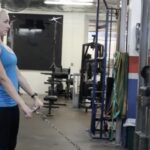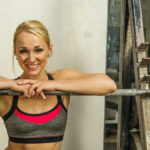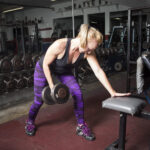Bushing vs bearing barbells: what is the difference, and which is right for you?
One of my favorite things about independent and not big-box gyms is that many of the lifters who go to these gyms have a really high lifting iq. They understand that good equipment can help them with their training, and they spend the time researching, and the money buying good equipment.
A great example of this is barbells. Most people just grab a barbell at whatever gym they go in. This is just fine if it suits you! But, when you start to realize how many specialty bars there are out there, and how they can help your training, it gets really fun!
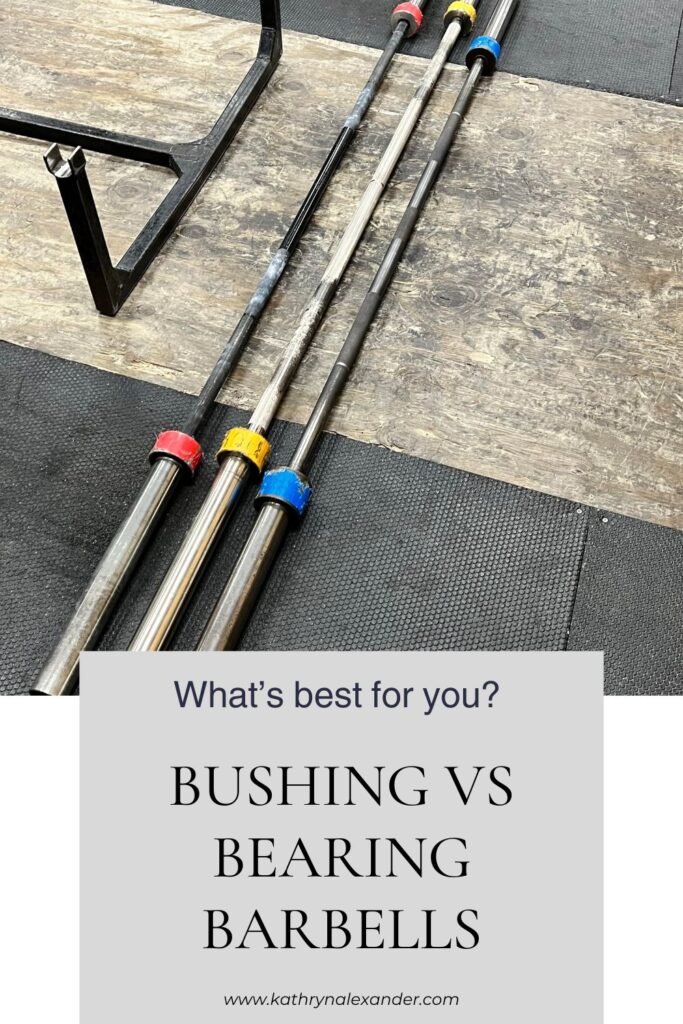
There are Olympic bars, squat bars, deadlift bars, power bars for the bench press, squat and deadlift. The Olympic bars are for the clean & jerk and snatch, and some accessory lifts like front squats, hang cleans, power cleans, etc.
Does it really matter to you whether you use a power bar or Olympic barbells, and what is inside the mechanics or your bar? Maybe! It depends on your goals, so let’s discuss and see what works for you!
Bushing vs Bearing Barbells: What are the Main Differences?
When it comes to selecting the right barbell for your strength training regimen, understanding the differences between bushing and bearing barbells is essential. Both types of barbells have their own unique characteristics and advantages, making them suitable for different applications and preferences.
In this comprehensive guide, we’ll delve into the main differences between bushing vs bearing barbells, explore their respective features and main differences, and help you determine which option is best suited for your specific needs.
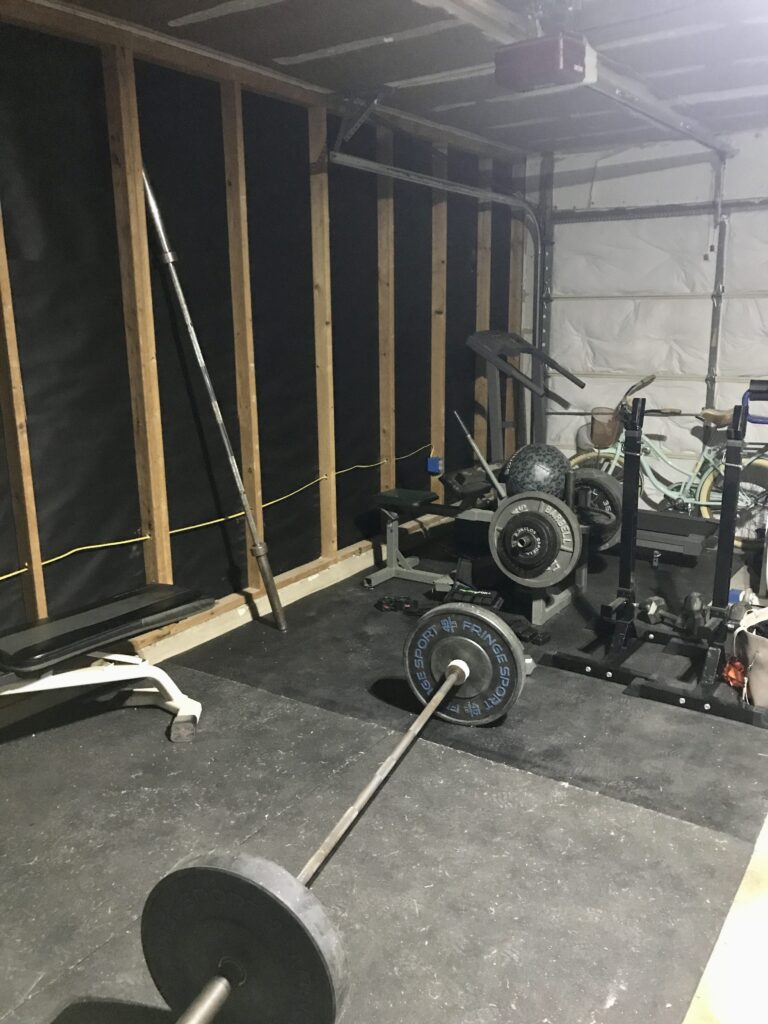
Bushings, known for their robustness and versatility, cater to a wide range of lifts, making them suitable for powerlifting and general strength training. On the flip side, bearings offer a smoother spin, crucial for the explosive movements found in Olympic lifting.
Each rotation system comes with its own set of advantages, and understanding these can significantly influence which barbell suits your lifting goals. Whether it’s hoisting heavy loads with precision or executing faster lifts, the choice between a bushing and bearing barbell could be the key to unlocking your best lift yet.
Bushing Barbells
Bushing barbells are equipped with bronze or composite bushings located between the bar shaft and the sleeve bearings. These bushings act as friction-reducing components, allowing the sleeves to rotate smoothly during lifts. Here are some key features and characteristics of bushing barbells:
- Friction Reduction: Bronze bushings provide a low-friction surface between the bar shaft and the sleeves, resulting in a smooth rotation system ideal for slower lifts and strength training exercises such as bench presses and squatting.
- Corrosion Resistance: Bushing barbells with bronze bushings offer excellent corrosion resistance, making them suitable for use in humid environments or outdoor settings where exposure to moisture is a concern.
- Durability: Bronze bushings are known for their durability and long service life, capable of withstanding heavy loads and regular use without compromising performance or structural integrity.
- Cost-Effectiveness: Bushing barbells are generally more affordable than bearing barbells, making them a popular choice among home gym owners, beginners, and budget-conscious individuals looking for quality bars without breaking the bank.
Bushing Barbells
Bearing barbells utilize high-quality ball or needle bearings located within the sleeves to facilitate smooth rotation and faster spins during Olympic lifts and dynamic exercises. Here are some key features and characteristics of bearing barbells:
- Smooth Rotation: Ball bearings or needle bearings offer superior spin and rotation, allowing for faster and more fluid movements during dynamic exercises such as Olympic lifts, power cleans, and snatches.
- High Load Capacity: Bearing barbells are designed to handle heavier loads and high-speed lifts, making them the preferred choice for competitive weightlifters, Olympic lifters, and athletes who demand optimal performance and precision.
- Reduced Friction: The use of ball or needle bearings minimizes friction between the bar shaft and the sleeves, resulting in a smoother spin and enhanced overall performance, particularly during high-speed lifts and rapid transitions between exercises.
- Precision Engineering: Bearing barbells are engineered to exacting standards, with precision-machined components and high-quality materials such as stainless steel for optimal durability, tensile strength, and corrosion resistance.
Key Differences:
- Rotation System: Bushing barbells utilize bronze or composite bushings for friction reduction, while bearing barbells employ ball or needle bearings for smooth rotation and faster spins.
- Application: Bushing barbells are well-suited for slower lifts, strength training exercises, and general fitness workouts, whereas bearing barbells excel in Olympic lifting, dynamic movements, and high-speed lifts requiring precision and control.
- Cost: Bushing barbells are typically more affordable than bearing barbells, making them a practical choice for home gym owners and budget-conscious individuals. Bearing barbells, on the other hand, are considered premium options and may come with a higher price tag due to their advanced bearing systems and precision engineering.
- Maintenance: Bushing barbells require minimal maintenance and upkeep, with bronze bushings offering excellent durability and corrosion resistance. Bearing barbells may require periodic lubrication and maintenance to ensure smooth operation and prolong service life, especially under heavy loads and high-speed conditions.
Other Differences in Specialty Bars
One main difference in an Olympic weightlifting bar, which is typically a bearing barbell, is that it doesn’t have the center knurling. This is because the bar is often used to perform cleans, which end up at the lifters neck and collarbone area. An aggressive knurl in that area will be abrasive and uncomfortable against skin. Center knurling is found on power bars, so that the barbell can have a more secure grip on the lifter’s shirt or back.
If you’re looking for a total gym enthusiast to help design your program, let’s do a free consult about online training for you. We’ll use every fun bar there is!
Another potential difference is that a squat bar is 32 mm, making it a big thicker than a standard 29 mm bar. This allows the bar to sit on the neck better, and allows it to handle as much weight as the heaviest squatters in the world need. A heavy squat bar needs to be very very strong, but doesn’t need to have a very fast spin. Squat bars are also typically 55 pounds instead of the standard 45. Most standard barbells weight 45 pounds, but specialty bars vary.
Deadlift bars have a smaller grip than standard bars, at 27 mm. The end of the sleeves on deadlift bars are often longer so they can accommodate more plates, and have a little more whip. This means they break the ground easier, as they bend more.
These differences are a little more about the specific application of the bar than the type of bearing, but it will still play into your decision of what kind of barbell to use. There is also a hybrid bar, which is typically a bushing bar.
Premium Picks: Top Recommended Bearing Barbells
For those of you diving deep into the world of Olympic lifting, the question of whether you should use a bushing vs bearing barbell is easily answered: you’ll find yourself practicing with bearing barbells. These barbells stand out, particularly for their smooth rotation and fast spin, catering flawlessly to the high speeds and heavy loads of Olympic lifts. Bearing barbells are used by the International Weightlifting Federation.
Among the elite, certain brands have established themselves as the go-to options. American Barbell and Eleiko (now located in Austin, Texas!), with their premium bearing systems, are unparalleled in precision. They ensure a smoother spin under duress, thanks to the high-quality needle bearings that define their construction. Furthermore, these barbells often come equipped with dust seals, an ingenious addition that prevents dirt and debris from compromising the barbell’s integrity. This feature, along with their robust stainless steel build, assures that with the right care, these barbells will remain your loyal companions on your path to Olympic lifting mastery.
Maintenance 101: Protecting Your Barbell Investment
Maintaining your barbell, be it a bearing or a bushing model, is like ensuring your vehicle runs smoothly by regularly checking its oil. For those of us invested in weightlifting, our barbells are invaluable tools, and their upkeep is crucial for their longevity and our performance. You might wonder why this is so essential.
The answer is simple: the smoother the rotation system, whether it’s bushing or bearing, the more secure and efficient your lifts will be. Dust, rust, or degradation of parts can significantly impede this smoothness, especially under heavy loads or during fast, explosive Olympic lifts.
Here are a few maintenance tips to keep in mind:
- Regular cleaning: Wipe down your barbell after each use to prevent build-up of sweat, dust, or chalk. For those with steel barbells, this step is crucial to fend off corrosion.
- Lubrication: Apply a suitable lubricant to the bearings or bushings periodically. This ensures a consistently smooth spin, essential for lifts like the snatch or clean and jerk.
- Proper storage: Never leave your barbell loaded with weight plates on the rack, as this can bend the bar over time. Instead, store it horizontally on a rack or, even better, in a vertical barbell holder to minimize dust accumulation on the sleeves.
By taking these simple steps, you ensure your barbell, whether bushing vs bearing barbell, remains a faithful tool in your strength training journey. A well-maintained barbell not only performs better but also significantly reduces the risk of injury during your lifts. Invest in your equipment’s maintenance, and it will surely return the favor in gains.
Durability-wise, both types boast long service lives, but bushings edge out with fewer moving parts and, consequently, a sturdier build over time. So, when it boils down to making the right choice for your lifting, whether it’s the dense atmosphere of a bustling gym or the quiet focus of a home gym, you must weigh these key differences.
Consider not just the lifts you’re currently performing but also those you aim to conquer. Whether your journey leans towards the steadfast endurance of powerlifting or the dynamic fury of Olympic lifting, choosing the appropriate barbell—bushing or bearing— could very well be the pivot on which your lifting success swivels.
Choose the Best Barbell For You
When it comes to choosing between a bushing vs bearing barbell, understanding the key differences and considering your specific needs and preferences is essential. Bushing barbells offer reliable performance, durability, and affordability, making them suitable for a wide range of strength training exercises and applications. Bearing bars have greater barbell spin but are a greater investment.
If building out your home gym isn’t a priority right now, and you are in Central Texas, check out the best gyms in Austin, where you can use all these bars.
For us focusing on heavy loads, slow lifts, or just building foundational strength, they offer the perfect blend of performance and durability.
Bearing barbells, on the other hand, provide superior spin, precision, and performance, making them the preferred choice for competitive weightlifters, Olympic athletes, and individuals seeking optimal performance and speed during dynamic lifts.
Whether you’re a beginner, an experienced lifter, or a competitive athlete, selecting the appropriate type of bushing vs bearing barbell can enhance your training experience and help you achieve your fitness goals more effectively.
If you have specific questions about a bushing vs bearing barbell, including barbells that aren’t even in this article, please email me! I’d love to hear what you’re training with and your questions/comments. Kathryn (at) kathrynalexander.com
Here are some fun home gym organization ideas to make your space more effective and fun for your training!

About the author
Kathryn Alexander is a strength coach and personal trainer in Austin, Texas. She loves hiking, college football, and the feel of a perfectly knurled barbell. Read more about Kathryn here.


